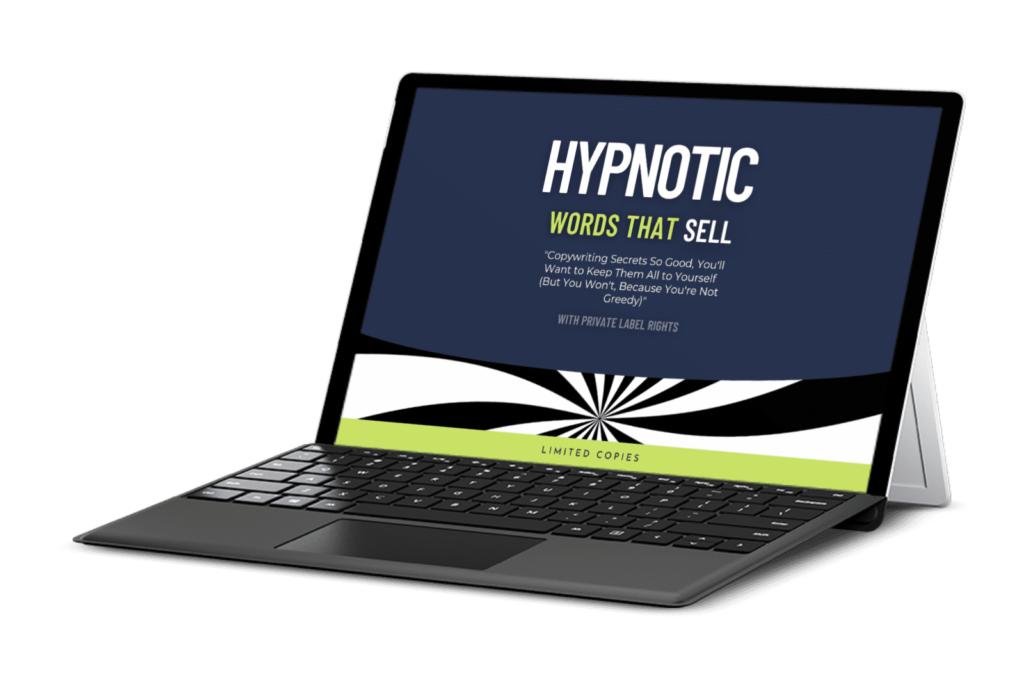8 Little Tips I Use To Write Amazing Content

In today’s competitive digital marketplace, producing amazing content is critical for grabbing and maintaining audience attention. Whether you’re an experienced blogger, content creator or just starting out, mastering the skill of creating interesting content can make all the difference.
Fortunately, there are eight little-known methods that will take your content from decent to genuinely great. These recommendations, which range from improving your writing process to better knowing your audience, provide vital insights into creating content that captivates, engages, and has a lasting influence.
1. Understanding Your Audience:
To create amazing content, you must first understand who your audience is. This involves delving deep into demographics, interests, behaviors, and pain points.
Let’s say you’re a fitness coach creating content for busy professionals. Knowing that your audience values time-efficient workouts and nutrition tips that fit into their hectic schedules can help you tailor your content accordingly. You might focus on quick workout routines or meal prep ideas that align with their lifestyle.
Identify your audience
Actively listening to your audience and engaging with them can provide invaluable insights. Pay attention to comments, messages, and feedback on your content.
Developing buyer personas can help you visualize and empathize with your audience segments. These fictional representations of your ideal customers encompass key traits, motivations, and pain points.
Imagine you’re a marketing consultant targeting small businesses. Your buyer personas might include “Savvy Startup Owner Sarah” and “Seasoned Small Business Owner Mike.” Sarah is eager to learn about cost-effective marketing strategies, while Mike is interested in scaling his business.
By creating content tailored to each persona’s unique needs, such as beginner’s guides for Sarah and advanced marketing tactics for Mike, you can address their specific pain points and provide valuable solutions.
2. Research Thoroughly
Solid research forms the bedrock of compelling material. When you take the time to dig deep and gather relevant information, you provide value to your audience and establish yourself as a credible source.
If you’re writing about the benefits of mindfulness, you might consult scientific studies, personal development blogs, and expert opinions to gather a comprehensive understanding.
Seek out case studies, success stories, or examples from everyday life that illustrate your key points. If you’re writing a guide on effective leadership, you might include anecdotes about renowned leaders or companies that have achieved success through their leadership strategies.
Take the time to understand different perspectives, even those that may contradict your own. This demonstrates that you’ve done your homework and can offer a nuanced discussion.
For instance, if you’re writing about the pros and cons of remote work, you could present arguments from both employees who enjoy the flexibility and employers who have concerns about productivity.
Reach out to experts, thought leaders, or influencers in your niche for insights and quotes. Interviewing industry professionals not only enriches your content but also helps you build valuable connections.
3. Create Catch Headlines For An Amazing Content
The headline is your lifeboat. It’s the first thing readers notice, and it often determines whether they’ll dive into your piece or scroll past it. Crafting catchy headlines is essential for capturing attention and enticing readers to engage with your content.
Power words are terms that evoke strong emotions or curiosity, making your headlines more compelling. Words like “amazing,” “unbelievable,” “ultimate,” and “essential” can add impact to your headlines. For example:
- “8 Amazing Tips for Crafting Engaging Content”
- “The Ultimate Guide to Mastering Content Creation”
Numbers provide specificity and promise value to readers. Lists and guides often perform well because they offer clear, actionable advice. Consider headlines like:
- “10 Proven Strategies to Boost Your Content Marketing Efforts”
- “5 Little-Known Secrets to Writing Irresistible Headlines”
Intriguing headlines pique readers’ curiosity, compelling them to click and learn more. They often pose a question or hint at a surprising revelation. Examples include:
- “The Secret Ingredient That Skyrocketed Our Website Traffic”
- “Are You Making These Common Content Writing Mistakes?”
Highlighting the benefits or solutions your content provides can attract readers seeking answers or improvements. Here are a couple of examples:
- “Unlock the Key to Consistently Producing High-Quality Content”
- “How to Write Content That Converts: Insider Tips Revealed”
Including relevant keywords in your headline can improve search engine visibility and attract readers interested in your topic. For instance:
- “Content Creation 101: Essential Tips for Beginners”
- “The Science of SEO: Writing Content That Ranks”
Watch how you can create a catchy headline here.
4. The Power of Storytelling

Storytelling is a potent tool that can transform your pieces from ordinary to extraordinary. Incorporating narratives into your content not only engages your audience but also leaves a lasting impact.
Imagine you’re writing an article about overcoming challenges in entrepreneurship. Instead of merely listing strategies, begin with a personal story of your own struggles and triumphs.
Share how you faced adversity, the lessons you learned, and how you ultimately succeeded. This personal touch not only establishes credibility but also creates an emotional connection with your readers.
If you’re explaining the importance of resilience, share stories of famous entrepreneurs who faced setbacks but persisted in achieving greatness. By providing concrete examples, you make your content more relatable and memorable.
Incorporating case studies into your content adds depth and authenticity. Suppose you’re writing a blog post about the benefits of a particular marketing strategy. Instead of just listing its advantages, include a case study of a company that successfully implemented the strategy and saw significant results.
If you’re promoting a product or service, include testimonials from satisfied customers who have benefited from it. By showcasing real-life stories, you demonstrate the value of your offering and inspire confidence in potential customers.
Anecdotes are short, captivating stories that pique curiosity and draw readers in. Start your content with a compelling anecdote related to your topic to hook your audience from the beginning.
For example, if you’re writing about the importance of time management, begin with a vivid anecdote about someone who transformed their life by mastering this skill. This sets the tone for your piece and motivates readers to keep reading.
5. Focus on Clarity and Simplicity
Simplicity is key. Your audience doesn’t have time to decipher complex sentences or wade through convoluted paragraphs. Keep your writing clear, concise, and easy to understand.
Imagine you’re writing a blog post about the benefits of mindfulness meditation. Instead of starting with a long-winded introduction, get straight to the point: “Mindfulness meditation offers numerous benefits for both mental and physical well-being.”
This clear and concise statement immediately communicates the topic and its significance to the reader.
When explaining concepts or processes, break them down into digestible chunks. Use bullet points or numbered lists to organize information logically. For instance, if you’re outlining the steps to start a small business, present them in a clear and structured manner:
- Conduct market research
- Develop a business plan
- Secure funding
- Register your business
- Launch your product or service
Avoid unnecessary jargon or technical language that might alienate readers who are unfamiliar with the topic. If you must use industry-specific terms, provide simple explanations or definitions to ensure clarity for all readers.
Finally, remember the power of simplicity in your language and sentence structure. Instead of opting for complex words or phrases, choose the simplest expression that effectively conveys your message. For example, replace “utilize” with “use” or “ascertain” with “find out.”
6. Use Visuals Wisely

Using visuals wisely can significantly enhance the impact of your content. Incorporating relevant images, videos, or infographics can complement your text and make your message more engaging.
For example, if you’re writing a blog post about fitness tips, including images of workout routines or infographics illustrating different exercises can provide visual cues and break up the text, making it more digestible for readers.
Similarly, if you’re discussing statistics or data, presenting them in visually appealing charts or graphs can help clarify complex information and make it easier for your audience to understand.
Additionally, embedding videos that demonstrate techniques or showcase testimonials adds an extra layer of credibility and authenticity to your content.
Visuals not only grab attention but also cater to different learning styles, ensuring that your content resonates with a wider audience.
However, it’s essential to ensure that the visuals you choose are relevant, high-quality, and aligned with your overall message to maximize their impact.
7. Infusing Personality into Your Content
Standing out requires more than just expertise and information. It demands personality – that unique essence that makes your content not only informative but also engaging and memorable. In this article, we’ll delve into why injecting personality into your writing matters and how you can do it effectively.
Why Personality Matters?
Think about your favorite writers or content creators. What draws you to their work? Chances are, it’s their distinct voice, their passion, their authenticity. Personality adds depth and authenticity to your content, helping you forge a genuine connection with your audience. It sets you apart from the sea of generic articles and makes your writing more relatable and enjoyable to read.
Injecting humor into your writing can make it more enjoyable and memorable. This light-hearted approach not only entertains your readers but also makes the content more engaging.
Sharing personal experiences or anecdotes adds authenticity to your content. For example, if you’re writing a how-to guide on overcoming procrastination, you could start by recounting a time when procrastination almost derailed a project of yours. This personal touch not only makes your advice more relatable but also establishes your credibility as someone who has been there and understands the struggle.
Demonstrating empathy in your writing shows your readers that you understand their challenges and concerns. This empathetic approach creates a sense of connection and trust with your audience.
How to Infuse Personality into Your Writing?

Identify your unique voice – the tone, style, and personality that make your writing distinct. Are you witty and irreverent? Thoughtful and introspective? Embrace what makes you, and let it shine through in your writing.
Don’t try to be someone you’re not. Write from the heart, share your genuine thoughts and experiences, and your readers will appreciate the honesty.
Write as if you’re having a conversation with a friend. Avoid overly formal or stilted language and opt for a more conversational tone that resonates with your audience.
Instead of simply stating facts or opinions, show your personality through vivid descriptions, relatable anecdotes, and expressive language.
8. Edit and Proofread
Finally, take the time to edit and proofread your content before publishing it. Typos, grammatical errors, and inconsistencies can detract from the credibility of your message, undermining the trust and authority you’ve worked hard to establish.
Review your content carefully, checking for errors in spelling, grammar, and punctuation. Reading your content aloud can help catch awkward phrasing or unclear sentences, while having someone else review it can provide valuable perspective and identify any blind spots you may have missed.
Ensuring clarity and coherence in your content not only enhances its professionalism but also strengthens its impact, allowing your message to shine through clearly and effectively.
Conclusion
In conclusion, crafting amazing content is a multifaceted process that demands careful attention to several key elements. Research provides the foundation, ensuring that your content is informative, credible, and relevant to your audience’s interests.
Creativity allows you to infuse your content with unique perspectives, storytelling, and visuals that capture attention and foster engagement. Attention to detail ensures that your content is clear, concise, and error-free, enhancing its professionalism and impact.
By implementing the eight tips outlined above into your writing process, you can create content that not only resonates with your audience but also drives engagement and leaves a lasting impression.
Whether you’re aiming to inform, entertain, or inspire, these strategies empower you to connect with your audience on a deeper level, ultimately establishing trust and loyalty that extends beyond a single piece of content.


